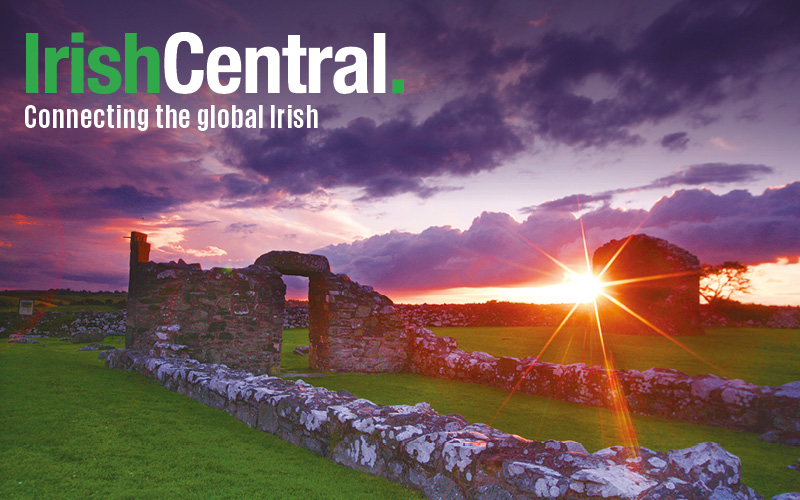Dublin’s fair city has changed in recent years. Cranes have come to dominate its skyline and people of all hues – Polish, Chinese and African as well as Irish – now throng its streets.
Yet one essential aspect remains the same. Dublin still has its literary heritage, a heritage that revolves around poets, pints and pubs.
If Parisian writers were inspired by café life, their counterparts in Dublin sharpened their wits and honed their stories in pubs. Brendan Behan and his barroom banter; Patrick Kavanagh nursing a pint and contemplating poetry in McDaid’s – two examples of writers seeking solace in the atmosphere, characters and companionship to be found in the pubs of Dublin.
This led me to thinking: if I wanted to discover more about Irish writers and delve deeper into the literary life of Dublin, perhaps the best way of finding out was to follow their trail through the pubs of the city.
This is exactly what I did on Dublin’s Literary Pub Crawl. This tour offers a new perspective on the city, the hostelries that line its streets and the characters that once frequented them.
“There have always been pub crawls in Dublin,” says Colm Quilligan, a Dublin-born actor who started giving this tour 21 years ago. “Trinity students had a reputation for rampaging through the city’s taverns as far back as the 17th century.”
But rampaging is not what Colm has in mind for his tour. Instead, he promises an experience that is “not too drunk and not too sober.” He and his fellow actor Frank will lead us through the streets of Dublin, regaling us with theatrical performances and entertaining tales of Joyce, Beckett, Behan and others along the way.
We start in the upstairs room of the Duke Pub. There are six of us on this cold November night – two Americans (a former writer with the Wall Street Journal and her son), a Polish librarian living in Dublin, two German students of Irish literature, and me.
We gather around as Colm kicks off the tour with a song. “A ballad is a living ghost that longs for a living voice,” he says, quoting from poet Brendan Kennelly before launching into a rendition of “Waxie’s Dargle.” His sidekick Frank encourages us to join in and before long, the entire group are singing loudly.
Colm and Frank then tell us a little about the Duke Pub. Dating back to the 18th century, it has quite an illustrious history.
Early in the 1900s, the Kiernan family from Longford bought the pub. Kitty, one of the family’s daughters, went on to become Michael Collins’ fiancée and this pub became one of his safe houses in the city as a result.
More recently, Paul Hewson – now known as Bono – used to be a regular.
But back to the present and our evening’s entertainment. Donning bowler hats, Frank and Colm perform an excerpt from Waiting for Godot. Their professional acting skills shine through as they bring the humor and pathos of this play to life. Afterwards, they make us laugh by telling us of the reaction to the Beckett play when it was first performed. One reviewer described it as a play “in which nothing happens, twice.”
More funny stories follow with tales of James Joyce and his early life in Dublin. Frank tells us how Joyce propositioned Nora Barnacle (the woman he jokingly refers to as “the only one who would stick to him”) and ended up embracing her amorously in a rhododendron bush in Howth. A few days later, Joyce tried the same trick with another woman, not noticing that she was already accompanied by a suitor. The man punched Joyce to the ground and he had to be rescued by a passing Jewish gentleman. Apparently, it was in recognition of this stranger’s act of kindness that Joyce made Leopold Bloom, the main character of Ulysses, Jewish.
We leave the warmth of the Duke and venture out into the freezing cold and the cobbled squares of nearby Trinity College. Shivering under the bell tower, which marks the cornerstone of this 400-year-old university, Frank and Colm recount some of its history.
Built in 1592, Trinity was initially a school of divinity. “Students were supposed to rise at 6 a.m. for prayers,” says Frank. “But they were better known for drunkenness and debauchery.”
This was still the case when Oliver Goldsmith attended in 1744, Oscar Wilde in 1872 and Beckett in 1920. All honed their drinking skills here.
To illustrate Wilde’s prodigious drinking ability, Frank tells a tale of his tour to the U.S. Wilde visited Leadville, CO, a mining town that was home to the biggest bordello in America, where there was little interest in his lecture on art and aesthetics. The miners challenged him to a drinking competition. They drank whiskey in the mines, expecting him to fail miserably. Instead, Wilde was the last man standing and had to learn how to operate the lift in order to bring them back up to the surface.
Teeth chattering, we weave our way through a maze of narrow streets to O’Neill’s Pub. There has been a pub here on Suffolk Street for more than 300 years. The latest incarnation is a Victorian building that houses a warren of interlocking rooms. Some of these are snugs – small alcoves that used to be set aside specifically for women but are now used by those seeking privacy.
Poets Michael Longley and Brendan Kennelly and writer Brian Keenan used to be regulars in O’Neill’s. Their pictures adorn the walls and we sip our drinks and soak in the warmth as Frank and Colm tell us all about them.
Before long, it’s time to move on again, this time to St. Andrew’s Church. Built on the site of the first Viking parliament in Dublin and formerly a Protestant church, it is now the city’s tourist office.
It is also the perfect setting for one of the highlights of the tour. It’s here, on the steps of the church, that Frank and Colm perform a passage from James Plunkett’s Strumpet City.
The story is set during the 1913 lockout, a major industrial dispute between 20,000 workers – led by Big Jim Larkin – and 300 employers in Dublin. The dispute lasted for months and resulted in severe hardship for the strikers, two of whom are depicted in the passage dramatized by Frank and Colm. One plays Toucher Hennessy, a man who needs money for a drink. (A ‘toucher’ is someone who buys one drink in a bar and then nods and agrees with the chatter of other drinkers, hoping that they will buy him another.)
Toucher is begging on the street with his friend Rashers Tierney. Rashers is giving him a crash course in how to tell the difference between Catholics and Protestants and how to adapt his patter in order to get the most money from both.
Both actors are pitch-perfect. With their accents and mannerisms, they succeed in bringing a long-forgotten time in Dublin’s history back to life. Their performance is so authentic that a local character – himself slightly drunk – interrupts to ask what they are talking about.
As we walk to our next port of call, we learn about the history of pubs in Dublin. Beer has been popular in Ireland since the Celtic times. Apparently even Saint Patrick himself had his own personal brewer.
With water too dirty to drink in the Middle Ages, ale was the beverage families drank at the table. Women brewed this ale in their own homes and some were better at it than others. If a woman’s ale was good, her neighbors and friends would buy it. In time, her house would be opened to the public.
This was how local pubs began. By 1750, Dublin had 2,300 of them, serving a city of 130,000 people.Today, while the population has grown, the number of pubs has decreased. One of the 800 now left – The Old Stand – was our next stop. An interesting stop it was too, what with its association with Michael Collins. He used this pub as a base to gather information about the profiles and whereabouts of British secret service agents during the War of Independence.
Our final destination was Davy Byrne’s Bar. This bar has a long literary lineage. It was here that Leopold Bloom enjoyed a cheese sandwich and a glass of Burgundy wine in Ulysses. James Joyce used to drink here. Samuel Beckett used to live above the pub when he was a student at Trinity. And Patrick Kavanagh, Brendan Behan and Myles na gCopaleen used to frequent the pub in the 1940s and 1950s.
As we sit inside, nursing our drinks, Frank and Colm tell stories about Brendan Behan, who described himself as “a drinker with a writing problem.” Behan was quite the character. He joined the IRA at 16 and set off to Liverpool on a one-man bombing mission. He was arrested and spent three years in detention, an experience that formed the basis of his novel Borstal Boy.
He was also a witty man, charming people wherever he went. On tours of the U.S., he was so popular he had to have a police escort – quite a departure for a man more used to being on the wrong side of the law.
This is but a taste of the many stories that were told on my literary tour of Dublin, a tour I would heartily recommend. My guides, Frank and Colm, were informative, friendly and thoroughly entertaining. They led me on a tour that was personal, humorous and always interesting. I learned about the history of some of the city’s most illustrious pubs. I heard stories about the writers of some of Ireland’s best-known literature. I laughed at their jokes. I marvelled at their antics. And I raised a few glasses in their memory.
The Dublin Literary Pub Crawl takes about 2 hours 15 minutes and involves walking approximately half a mile. There are eight pubs on the tour. Four are visited in any given night. To find out more, visit www.dublinpubcrawl.com




Comments